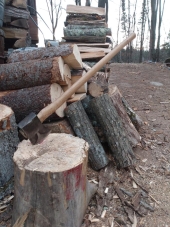






NWor Nowhere wrote:Rachael,
There are many ways to till the soil, including "no-till" gardening. Really what no-till means is letting the worms do the tilling for you. By feeding worms, you encourage them to spend time there, eating their way through the soil, constantly cycling nutrients from top to bottom, as well as creating water and air channels to feed all of the other critters. The benefit of no-till is that, as stated earlier, you are not exposing the carbonaceous materials (which, in all their stages of life and decomposition are what make soil different from dirt) to the atmosphere, nor are you breaking up micro-ecospheres that the bacteria and fungi set up for themselves. If this is just for a report, you may look into the soil building practices of Masanobu Fukuoka, Yeomann (who is the man that Mollison got a lot of his ideas from), and Joel Salatin, among others. They all have a lot to say about improving damaged soil through agriculture.
If you're starting a garden, I like to fluff the soil (without turning it over, mind you) with a spading fork. Depending on the compaction of the soil, and a couple of days after a good rain, stick the tines of the fork in about 3 inches vertically, pull the handle back and watch the soil come up - don't rip the soil or invert it. Go back to vertical, put the fork in another few inches, and repeat, go back to vertical, this time put the fork in all the way (if the soil is really packed, you may not be able to do this all at once) and repeat. By the time your done, you should have increased the height of the soil by a couple of inches. Do it for an entire bed, which doesn't take nearly as long as it sounds, and cover with mulch. If you're converting lawn, put down a sheet of newspaper 4 pages thick or some cardboard, then cover with a few inches of grass clippings, horse manure, straw, etc. Never step there again. You should see a major increase in the tilth (dark, crumbly, earth-iness of soil) with a couple of months. I used this technique on a bed of river silt in New Orleans once, with very little humus to start. Within a year, the soil was black to about 5 inches. I consider it no till, maybe some would argue with me.
Good luck.
